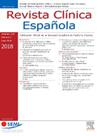Estudio prospectivo del síndrome de piernas inquietas en una muestra de donantes de sangre
IF 1.7
4区 医学
Q2 MEDICINE, GENERAL & INTERNAL
引用次数: 0
Abstract
Background and objectives
Blood donation is suggested to increase the risk of restless legs syndrome (RLS). This study aims to assess the prevalence of RLS in Spanish blood donors and determined its potential correlation with iron metabolism parameters.
Materials and methods
Prospective cohort study of 129 blood donors (54.3% men, 39.44 years ± 11.0) that underwent a physical examination, blood analysis (hemoglobin, ferritin, transferrin saturation index and soluble transferrin receptor) and a RLS screening questionnaire followed by a prospective follow-up study including a clinical phone interview. A multivariate logistic regression model was performed to examine the association between RLS and other variables.
Results
Eighty-four (65.1%) participants were repeat blood donors (mean of 2.11 donations/year) at inclusion and 61 (47.4%) at follow-up (mean of 2.09 donations/year). Non-anemic iron deficiency (ferritin < 50 μg /L) was high in women P<0.001 and in repeat donors (P=0.003). The prevalence of RLS was 14.1% at inclusion increasing prospectively (19.5%; P=0.065). On multivariate analysis, gender was the only variable significantly associated with a RLS diagnosis, being higher in women (OR 5.1; 95% CI 1.71-15.3; P=0.003).
Conclusions
Despite the high prevalence of non-anemic iron deficiency there was no association between ferritin, soluble transferrin receptor concentration values and RLS diagnosis. Gender was associated with RLS diagnosis regardless of other variables.
在献血者样本中对不稳腿综合征的前瞻性研究
背景与目的建议献血增加不宁腿综合征(RLS)的风险。本研究旨在评估西班牙献血者的RLS患病率,并确定其与铁代谢参数的潜在相关性。材料与方法对129名献血者(男性54.3%,39.44±11.0岁)进行了前瞻性队列研究,进行了体检、血液分析(血红蛋白、铁蛋白、转铁蛋白饱和指数和可溶性转铁蛋白受体)和RLS筛查问卷调查,并进行了前瞻性随访研究,包括临床电话访谈。采用多变量logistic回归模型检验RLS与其他变量之间的关系。结果84例(65.1%)参与者在纳入时为重复献血者(平均2.11次/年),61例(47.4%)参与者在随访时为重复献血者(平均2.09次/年)。非贫血性缺铁(铁蛋白);50 μg /L)在女性(P= 0.001)和重复献血者(P=0.003)中较高。纳入时RLS患病率为14.1%,预期增加(19.5%;P = 0.065)。在多变量分析中,性别是唯一与RLS诊断显著相关的变量,在女性中更高(OR 5.1;95% ci 1.71-15.3;P = 0.003)。结论尽管非贫血性缺铁发生率高,但铁蛋白、可溶性转铁蛋白受体浓度与RLS诊断无相关性。无论其他变量如何,性别与RLS诊断相关。
本文章由计算机程序翻译,如有差异,请以英文原文为准。
求助全文
约1分钟内获得全文
求助全文
来源期刊

Revista clinica espanola
医学-医学:内科
CiteScore
4.40
自引率
6.90%
发文量
73
审稿时长
28 days
期刊介绍:
Revista Clínica Española published its first issue in 1940 and is the body of expression of the Spanish Society of Internal Medicine (SEMI).
The journal fully endorses the goals of updating knowledge and facilitating the acquisition of key developments in internal medicine applied to clinical practice. Revista Clínica Española is subject to a thorough double blind review of the received articles written in Spanish or English. Nine issues are published each year, including mostly originals, reviews and consensus documents.
 求助内容:
求助内容: 应助结果提醒方式:
应助结果提醒方式:


